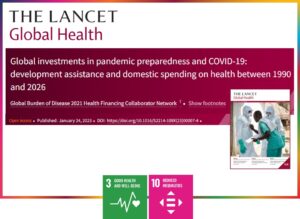
A collaborative international effort, inclusive of researchers from Near East University, embarked on a comprehensive analysis focusing on global health spending, development assistance for health (DAH), and the urgency for enhanced pandemic preparedness amidst the COVID-19 pandemic. The study aimed to compare health spending globally, assess the disbursement of development aid for pandemic preparedness, and project future health spending needs.
The analysis, spanning from 1990 to 2021 and predicting trends until 2026 across 204 countries, revealed significant disparities in health spending. In 2019, while high-income nations allocated $7.3 trillion to health, low-income countries spent a mere $24.8 billion. Notably, the pandemic triggered an unprecedented surge in DAH, with $1.8 billion directed to pandemic preparedness and $37.8 billion for COVID-19 response in low- and middle-income countries (LMICs).
The findings highlighted a substantial shortfall in financing pandemic preparedness; although contributions for the health-related COVID-19 response exceeded recommendations by 252.2%, support for pandemic preparedness was only 12.2% of the target set by the High-Level Independent Panel (HLIP). Projections revealed that governments in 17 LMICs are anticipated to increase health spending equivalent to an additional 1% of GDP, aligning with HLIP recommendations.
The study underscores the critical need for sustained funding in global health, especially in pandemic preparedness. While unprecedented DAH scale-up in 2020 and 2021 provided an opportunity, historical underfunding persists, necessitating concerted efforts to maintain financial support.
The years 2020 and 2021 witnessed an unparalleled surge in global health funding, offering a unique opportunity to bolster essential global health initiatives, notably in pandemic preparedness. The COVID-19 crisis underscored the significance of investing in global public goods like infectious disease surveillance systems. However, the chronic historical underfunding in pandemic preparedness necessitates proactive measures to redirect this trajectory and ensure consistent funding.
This critical moment calls for a paradigm shift in global health financing, steering away from the recurring cycle of underfunding and crisis-driven allocations. Sustainable funding for vital global health functions, particularly pandemic preparedness, remains pivotal in achieving Sustainable Development Goals (SDGs) and fostering a resilient and equitable global health landscape.
For further details, access the original paper from the publisher’s link:
https://www.thelancet.com/journals/langlo/article/PIIS2214-109X(23)00007-4/fulltext